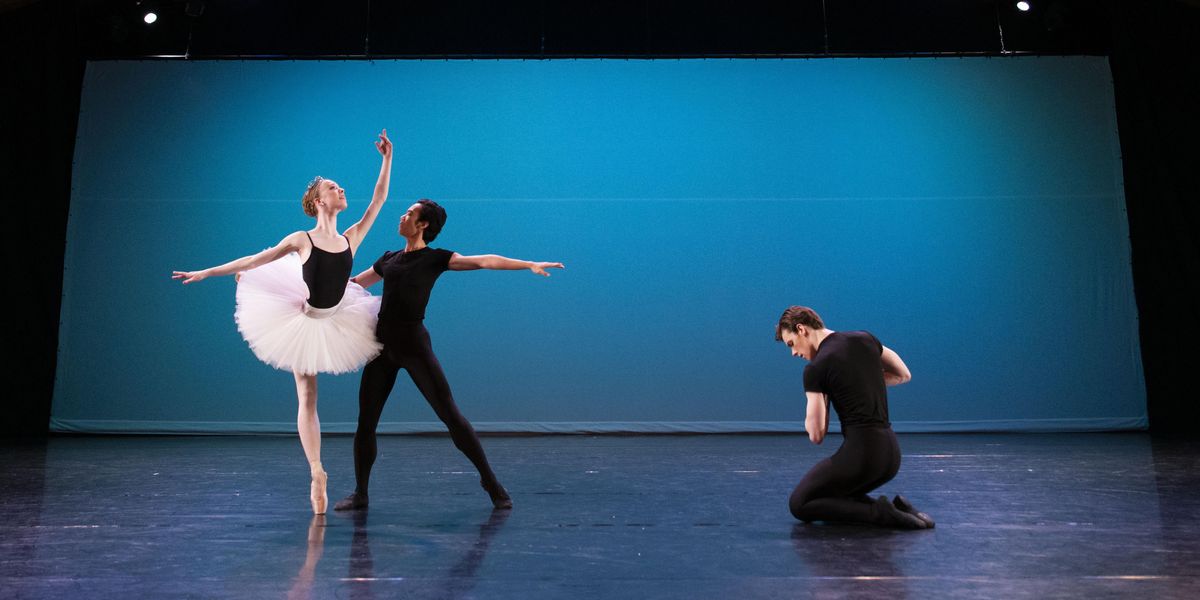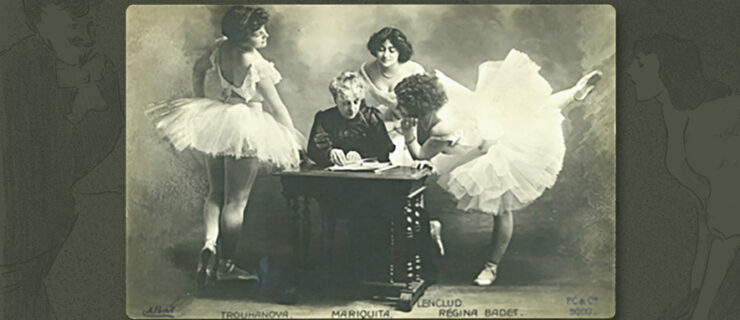After Fall "Bubble" Residency, ABT Studio Company Gets Ready to Present Its Winter Virtual Program
The dominant narrative of how a young ballet dancer gets into a professional company generally goes something like this: You’re accepted into a prestigious summer session at a company school, and then get invited to stay year-round. You perform a bit with the company for The Nutcracker and, if you’re lucky, in a few other programs. You hope for a leading role in the student showcase performance, which helps you land an apprenticeship. After a year, you get invited to join the corps.
And then there’s ABT Studio Company, which turns that narrative up a notch—to an altogether more glamorous wattage. Studio Company members tour extensively all over the country and world, almost all year long, and perform in American Ballet Theatre’s Nutcracker in California, each year. World-class choreographers create new works on them. Increasingly, “StuCo,” as it’s affectionately called, has become the direct pipeline into ABT. (Almost 80 percent of company members spent some time there.) Its dancers, ages 17 to 21, are some of the most talented of their generation. And certainly, they are among the most fortunate.
But then came COVID-19, which abruptly sent all of the dancers home in March 2020. And home they’ve remained ever since, except for a seven-week fall “bubble” during which they briefly reunited and put together a virtual program. The resulting performance, ABT Studio Company Winter Festival, will premiere in two parts on February 9 and 10 on ABT’s YouTube channel.
Rewind to March 2020: The 2019–20 cohort’s touring schedule had been jam-packed. They’d performed in the Philippines, Los Angeles, Orange County, upstate New York, Massachusetts, New Jersey and North Carolina. They were soon to fly to London for the International Draft Works festival hosted by The Royal Opera House. Choreographer and New York City Ballet principal Lauren Lovette had just created a new piece on them, and she hit the finish line not an hour too soon. After wrapping up rehearsal on Friday, March 13—one day after Broadway was shut down, and the same day that then-President Trump declared a national emergency—the dancers were told to fly home as soon as possible.
“I caught them just in the nick of time,” Lovette says. Her La Follia Variations was meant to premiere a month later at the Ailey Citigroup Theater. Instead, the dancers—many of whom hadn’t lived at home with their parents for years—were back in their family living rooms taking class together on Zoom, not knowing when or if they’d make it back to New York City.

Kyra Coco in Sascha Radetsky’s Class Concert
Avery Brunkus, ABT
For Sascha Radetsky, ABT Studio Company’s artistic director, getting the dancers back together quickly became an imperative. He hatched the idea of the fall bubble with Studio Company manager Claire Florian as soon as it became clear that reconvening in New York City would not happen any time soon. His wife, Stella Abrera—an ABT principal until this past summer—had recently become artistic director of Kaatsbaan Cultural Park in Tivoli, New York. Sitting on 153 acres, the center had everything they needed: space, studios and living accommodations.
But first there was the question of quarantining. After flying back to New York City in late September, the dancers were loaded into extra-large shuttle buses that allowed for social distancing, and driven to Goodspeed Musicals, a performing arts center in East Haddam, Connecticut. For two weeks, they quarantined and trained in single bedrooms—on carpeted floors—before they finally got back into the studio. They spent a week rehearsing at Goodspeed before heading to Kaatsbaan.
“It was electric,” says Tristan Brosnan, who joined Studio Company in September 2019. “All these connections hadn’t been sparked since March, but they were suddenly there. You’re seeing people without a face mask, you’re touching them, dancing with them. Everyone had so much energy, and extra reserves of motivation, because it defied everything that our lives had become for the past eight or nine months.”
Over five weeks at Goodspeed and Kaatsbaan, they prepared nine pieces for filming, including a new work by Hope Boykin entitled For What Is It All Worth? The piece, says Boykin, is inspired by “young people who are able to stand up for what they know is right.”
The bubble also served as a glint of hope against a backdrop of desperation. For Studio Company dancers, the brutal economic reality of the ballet world, which has been frozen in time by the pandemic and resulted in wide-scale hiring freezes, is all too real.

ABT Studio Company dancers in Hope Boykin’s For What Is It All Worth?
Avery Brunkus, Courtesy ABT
For Boykin, however, there is reason for them to be optimistic: “This bubble has raised the bar of what they know they’re capable of.” She views the quarantine as a metaphor for all the sacrifices they’ve been willing to make to keep dancing since COVID began, and she’s confident they’ll come out all the stronger for it. “They just need to have patience,” she says. “It’s not going to be easy, but they’ve got to remember they’re still on an upward trajectory.”
Lovette sees this moment as a time that’s ripe for nurturing assertiveness and exploration. “What’s cool about right now is that it’s a direct cutoff from the way things have always gone,” she says. “I don’t think the old way of ‘waiting to be asked’ is how things are going to go anymore. I keep telling young dancers, this is the time to connect to who you are and to explore: If you’re interested in costume design, now’s the time to play. If you’ve thought about choreographing, now’s the time to play.”

Kotomi Yamada in Le Corsaire Suite
Avery Brunkus, Courtesy ABT
Radetsky, who is currently co-planning a spring bubble for the Studio Company, sees another silver lining, which is the emergence of an artistic maturity that teenage dancers are normally years away from cultivating.
“These dancers have matured a lot in a short amount of time,” he says. “They’ve gone through a mini crucible—like an injury. It’s grief, not being able to do what you love to do.”
“To have what you love most taken away from you is something that happens to all dancers eventually, but they’ve been hit with this trial run at a very young age,” Radetsky adds. “That fosters life experience. It can deepen your artistry, as it galvanizes your hunger to get back out there.”





